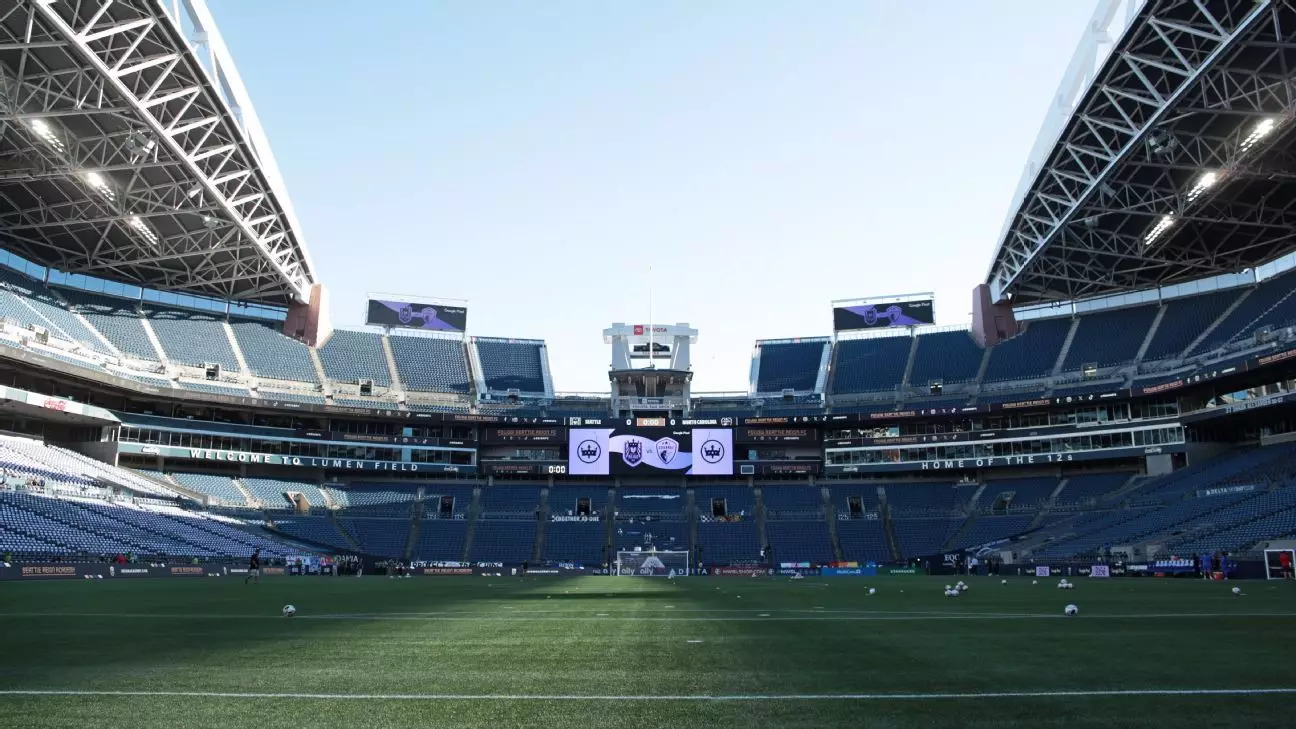As the world turns its gaze towards the 2026 FIFA Men’s World Cup, set to unfold across North America, soccer enthusiasts and industry stakeholders are eager to witness not just the spectacle of the tournament itself but also the intricate implications it holds for related leagues. Jessica Berman, commissioner of the National Women’s Soccer League (NWSL), has made headlines with her assertion that the league intends to maintain its regular play while the World Cup games are conducted. This bold decision reflects a growing confidence in the women’s game and its ability to stand on its own, but it inevitably brings forth a myriad of questions regarding logistics, fan engagement, and overall player welfare.
While Berman emphasizes the need for clarity amidst the chaos, the vast challenges ahead cannot be overlooked. The timing of the World Cup, occupying a significant part of the NWSL’s typical season, has the potential to overshadow the women’s league. Unlike Major League Soccer (MLS), which plans to pause its activities to accommodate its players’ national commitments, the NWSL is betting on its resilience. However, such a gamble requires not just creativity but a deft execution as the league juggles its commitments and resources during a period that will have heightened competition for attention from sports fans.
Logistical Complications on the Horizon
The upcoming Men’s World Cup will feature a dramatic expansion, with 48 participating teams. This increase in scale translates into greater logistical needs for both FIFA and local organizing committees — but what does this mean for the NWSL teams situated in host cities? As several NWSL teams will have their training facilities commandeered by national teams as base camps, the league faces the existential crisis of how to operate without access to its normal infrastructure.
The Houston Dash, Kansas City Current, Racing Louisville FC, and Utah Royals FC, outfitted with training facilities that will be designated for World Cup use, face the daunting task of finding alternate arrangements. Berman’s remarks reflect an understanding of this complexity, as she states that “everything is on the table.” Yet how convincingly does this communication convey readiness to adapt?
Finding alternative venues may not be simple, especially with complex arrangements required to ensure that players receive the optimal training and preparation they need. Last-minute venue changes can disrupt not only training protocols but also individual player focus and team cohesion. This scenario evokes concerns about the overarching ability of these teams to maintain performance levels during a critical competitive window.
The Experience of Past Interruptions
The NWSL previously faced interruptions that serve as cautionary tales. During the Tokyo Olympics, the league found itself navigating the uncharted waters of scheduling, ultimately halting its regular-season play for a substantial duration. Attempts to create a crossover event with Liga MX Femenil faltered, showcasing how delicate the balance between innovation and execution can be. Given the challenges faced in past years, can the NWSL afford to take on such risks once more?
While it’s admirable to foster international collaborations and leverage opportunities like the Women’s World Cup, there is an added layer of complexity when such strategies do not yield expected results. Berman’s acknowledgment of the current state of operations suggests that it’s essential to learn from previous missteps — ensuring that the NWSL doesn’t repeat the past but instead uses it as a foundation for informed decision-making.
The Broader Implications for Growth
Jessica Berman’s commitment to not pausing the NWSL during the Men’s World Cup may also be a strong indication of the league’s aspirations for growth and legitimacy within the broader soccer community. By pushing forward during a time when men’s soccer takes center stage, the NWSL sends a potent message about its place in the conversation surrounding the sport.
However, such ambition must be tethered to reality. The complexities of market saturation must be considered: will fans turn their attention towards the Men’s World Cup and leave the NWSL struggling for viewership? Will local television stations prioritize World Cup broadcasts over NWSL matches? While there is an appetite for women’s soccer, the broader soccer market remains in flux. Berman’s resolve must be complemented with strategic marketing and community engagement efforts to ensure that the NWSL secures its share of the spotlight.
Looking Ahead
With a Women’s World Cup on the horizon for 2027 and the Olympics in Los Angeles in 2028, the future looks vibrant for women’s soccer. The recent U.S. bid to host the 2031 Women’s World Cup further signifies a burgeoning recognition of women’s sports on a global stage. However, the upcoming Men’s World Cup serves as both an opportunity and a litmus test for the NWSL, which must find its footing during a time of exceptional transition.
The balancing act of seizing bold opportunities while managing risks presents a unique challenge. Berman’s leadership will be tested in the coming months as strategies evolve and crucial decisions loom. Navigating these waters with a sense of purpose will define not only the outcomes of the 2026 World Cup but also the enduring legacy of the NWSL in the context of a sport striving for equality and recognition.

Leave a Reply